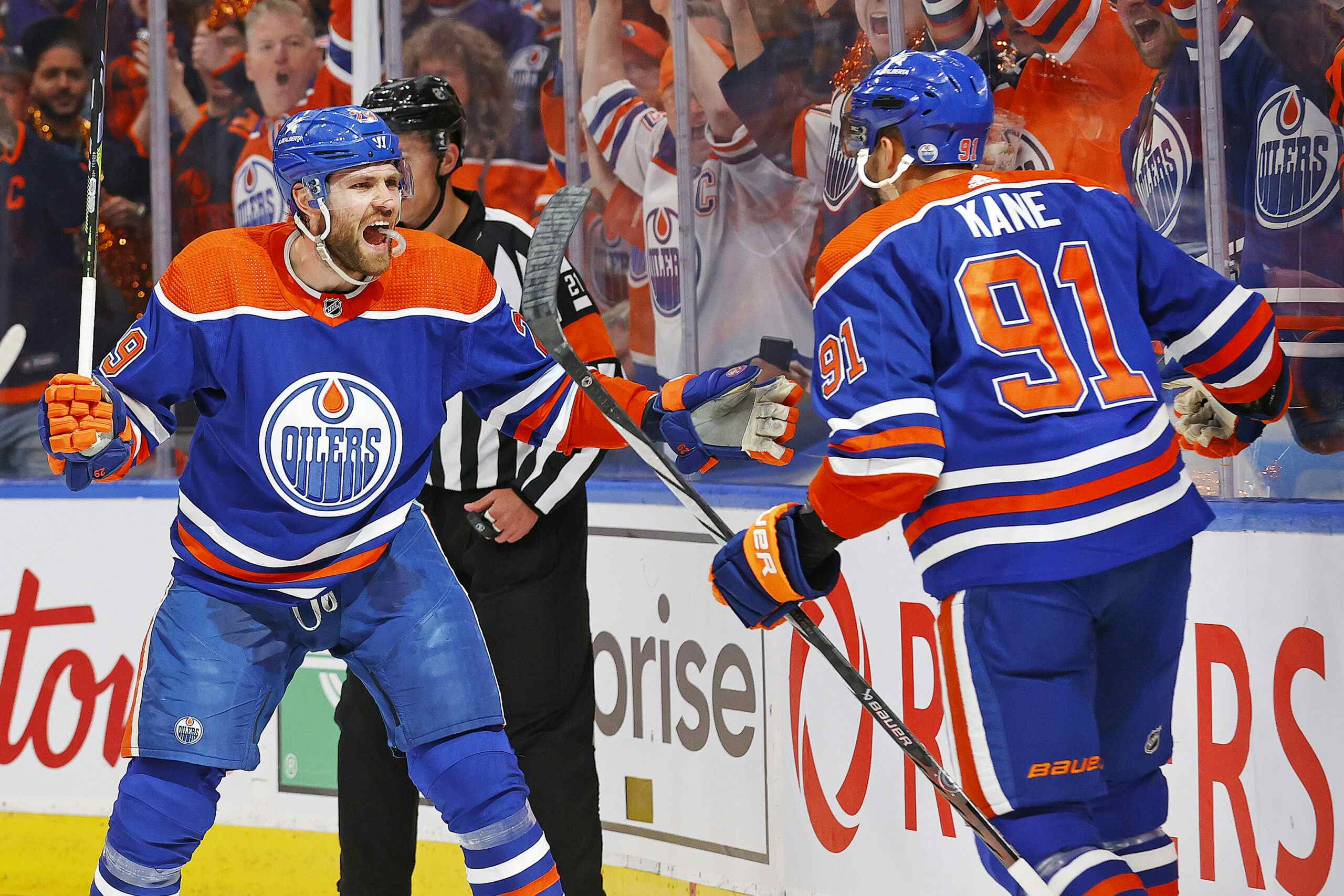How Big Do Top-Six Forwards Need To Be?

Pavel Datsyuk, Dan4th Nicholas/Wikimedia Commons
How big should a group of top-six forwards be for a team hoping to make a playoff splash?
Back in April, I asked whether Ryan Nugent-Hopkins and Sam Gagner were too small to co-exist on an Oilers team contending for the Stanley Cup. Looking at Stanley Cup Finalists in the post-lockout world, the answer was a clear “no.”
However, what wasn’t answered in that piece was whether a team could win with smaller centers and smaller wingers in the top-six. That’s the question I want to look at today.
To answer it, I’ve looked up the top-six forward for every team to make it to the Conference Finals in the last five seasons – a group of 20 clubs. Then I took their top-six forwards (ranked by total minutes played in the playoffs that year) and ranked them by size. “Size” was determined by multiplying height and weight together; here’s the list:

I’m going to touch on a few things that struck me as interesting before I get into where the Oilers would rank on that list.
- The biggest teams, by far, are the two San Jose Sharks clubs that made it to the Western Conference Finals. On the 2010 team, only Joe Pavelski came in at less than 6’, 200lbs (5’11”, 195lbs) and four of their top six forwards were 6’2”, 220lbs or bigger.
- Detroit’s position on this list surprised me, since I typically have thought of them as a smaller team. The secret is weight – for instance, the 2008 Stanley Cup team had just one top-six forward taller than 6’ (Mikael Samuelsson, with Johan Franzen missed the cut thanks to injury) but the lightest guy was Valtteri Filppula, at 195lbs. Height-wise, only the 2010 Montreal Canadiens were shorter than Detroit.
- That 2010 Canadiens team – this was the club that rode Jaroslav Halak past Washington and Pittsburgh – was tiny up front. Their top-three forwards were Brian Gionta (5’7”, 173lbs), Scott Gomez (5’11”, 198lbs) and Mike Cammalleri (5’9”, 190lbs); of their top-six, nobody cracked the 6’ mark and only Andrei Kostitsyn was over 200lbs.
- The 2009 and 2010 Chicago Blackhawks are interesting teams for Oilers fans. Kane and Toews were both healthy in 2009 (Kane missed a single game) but Toews just barely made the top-six forwards and Kane didn’t. Neither saw any penalty-killing time and Dave Bolland was preferred at even-strength to Toews that year. That was the coaching staff bringing those players along slowly – both guys saw twice as much usage in the offensive zone as they did in the defensive zone because the offensive talent was there but the total game was still developing (Bolland, in contrast, saw more than twice as many defensive zone draws as offensive zone draws). The next year – the year Chicago won it all – both players still saw far more offensive work than defensive work, but they were trusted with more ice-time (almost two minutes more per game at even-strength) and Toews took on a major penalty-killing role.
- The Flyers have a reputation for liking big, beefy forwards but the 2010 squad – the most successful playoff edition of the team since the lockout – had just one relatively big guy; Scott Hartnell at 6’2”, 210 lbs. Nobody else on the club was north of 200lbs.
Here’s the same list again, but with last year’s Oilers (ranked by total minutes played) and a 2013 version of the Oilers. The 2013 version is less about what the team will be next year (I’d be shocked if both Smyth and Horcoff fell out of the top-six, particularly given their penchant for being healthy while other guys get hurt) and more about the long-term projected future of the team.
.png)
Last year’s group is a little on the small side, but not outrageously so; Horcoff and Smyth both have good size, as does Jones, and none of the players are especially tiny. The problem is the long-term group. Height isn’t as big an issue as it’s made out to be – the team is a hair behind the 2008, 2010, and 2011 Cup winners in that department – but weight is where the team falls behind. Only Hall and Gagner are north of 190lbs; not one player is bigger than 200lbs. Going back to the 2008 Detroit team, the lightest guy on the club (Valterri Filppula at 6’, 195lbs) would be the heaviest of this top-six.
On the other hand, one thing we aren’t penciling in here is growth as these players get older, something that sometimes happens and sometimes doesn’t. Taylor Hall was listed at 6’, 182lbs in his draft year; two years later those numbers are 6’1”, 194lbs. On the other hand, Sam Gagner was listed at 5’11”, 191lbs when the Oilers signed him to his entry-level deal; today he’s listed at 5’11”, 195lbs. Other players have made bigger jumps than Hall (who may not be done yet) – Patrick Kane and Steven Stamkos are both listed more than 20lbs heavier now than they were on draft day.
It really wouldn’t take much for the Oilers to make a big jump on this list. Pencil in 20 extra pounds between Hall, Eberle, Nugent-Hopkins and Yakupov and swap out Hemsky for a Mikhail Samuelsson-type and suddenly the Oilers have a bigger top-six than the Bruins’ 2010 team.
The point? Like most everyone else, I’d like to see the Oilers’ top-six forward group be a little bigger than it is. I just don’t want to see that improvement in size come at a major cost in terms of skill – and looking at what other teams have won with, I don’t think it needs to.
Other posts by Jonathan Willis
Recent articles from Jonathan Willis





